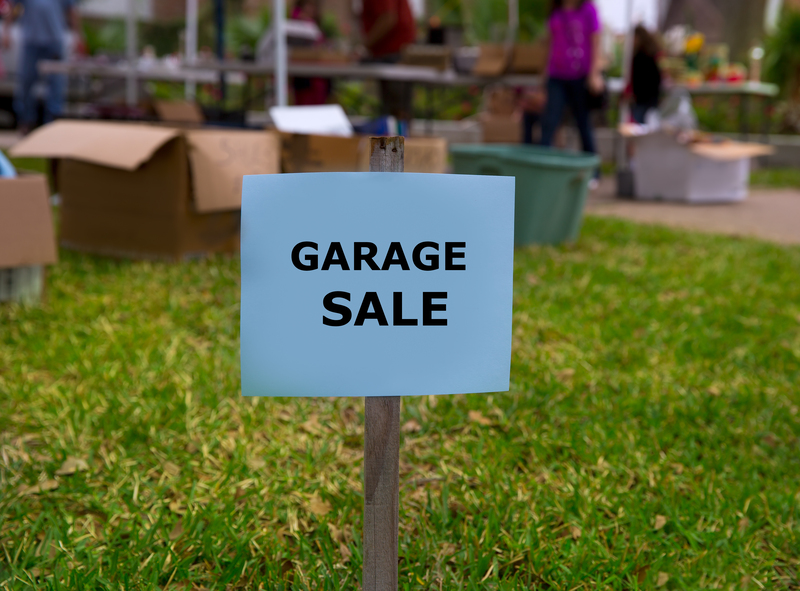How to Responsibly Get Rid of Outdated Pots and Pans
Most kitchens play host to a collection of old, scratched, or warped cookware. If you find yourself with outdated pots and pans you no longer use, you might wonder--what's the best way to dispose of them sustainably? Rather than simply tossing them in the trash, there are responsible and environmentally-friendly ways to manage old cookware. This comprehensive guide covers every step on how to responsibly get rid of your old pots and pans
Why Proper Disposal of Old Cookware Matters
The materials used in pots and pans--such as aluminum, stainless steel, nonstick coatings, and copper--can harm the environment if not disposed of correctly. Most can't be simply put in your curbside recycling bin. Additionally, some discarded cookware ends up in landfills, where it won't break down for hundreds of years. By finding sustainable solutions, you free up kitchen space and protect the planet.
The Environmental Impact of Improper Disposal
- Aluminum: Takes centuries to decompose and can leach toxins.
- Nonstick coatings: Many contain PTFE or PFOA chemicals, which can release harmful agents when incinerated.
- Steel and copper: Valuable resources that can be recycled instead of wasted.
Reducing waste and maximizing recycling diverts metal from landfills and keeps hazardous coatings from contaminating the environment.

How to Prepare Cookware for Disposal or Donation
Before disposing of your old pots and pans, take a few steps to ensure they're in the best possible condition for donation, recycling, or other uses.
- Clean cookware thoroughly - Remove any food residue, grease, and stains. Donation centers, recyclers, and crafters all prefer--sometimes require--clean cookware.
- Check for usability - Is your pan structurally sound? Is the handle still secure? Nonstick pans with surface scratches may still be usable for some people.
- Sort by type - Group aluminum, cast iron, stainless steel, Teflon-coated, and copper items separately. Some facilities may only accept specific types.
Donating Pots and Pans in Good Condition
One of the most eco-friendly ways to dispose of old cookware is by donating items that still have life left in them. Many charitable organizations and communities need kitchen items.
Where to Donate Used Pots and Pans
- Thrift stores: Goodwill, Salvation Army, and local shops accept gently used cookware.
- Shelters and community centers: Homeless or domestic violence shelters, refugee resettlement agencies, and soup kitchens are often in need.
- Resale or reuse websites: Post on Craigslist, Freecycle, Facebook Marketplace, or Nextdoor to offer your items for free.
- College students or first-time renters: Young adults furnishing their first homes are often grateful for free or low-cost pans.
Call ahead to ensure the organization is accepting cookware and clarify any requirements. Most require items to be clean, free of significant rust, and structurally sound.
Can You Recycle Old Pots and Pans?
Many people assume that pots and pans can go directly into the household recycling bin, but that's rarely the case. The reality is more nuanced, but recycling outdated cookware is possible with the right approach.
Know Your Materials
- Cast Iron: 100% recyclable, but heavy. Scrap metal facilities accept it.
- Stainless Steel and Aluminum: Also widely recyclable via scrap yards.
- Nonstick (Teflon, ceramic, enamel): Some facilities accept these, but coatings can complicate recycling.
- Copper: Highly valued for recycling; take to specialty recyclers.
How to Recycle Pots and Pans Properly
- Locate a Scrap Metal Recycling Facility
Use resources like Earth911 or call your local waste management company. Many areas offer drop-off points just for metals. - Remove Non-Metal Parts When Possible
Plastic handles, glass lids, and rubberized covers should be removed before recycling, as they may not be accepted by metal recyclers. - Sort by Type
Keep stainless steel, aluminum, and copper separate if you have several types--they may offer different prices or have separate procedures. - Check for Nonstick or Ceramic Coatings
Some facilities may require you to remove nonstick coatings. If removal isn't possible, ask if they accept coated pans anyway (many can still process them, but it's important to ask). - Transport Safely
Make sure pots and pans are packed safely for transport. Wear gloves if your cookware is sharp or rusted.
Pro Tip: Some cookware brands, such as Calphalon and GreenPan, offer their own recycling or mail-back programs. Check your manufacturer's website.
Local Government Recycling Programs
Contact your city's sanitation department to ask if they hold scrap metal recycling days or have recommendations for disposal. Some municipalities offer bulk recycling events or even collect scrap metal at the curb on certain days.
Creative Ways to Repurpose Old Pots and Pans
If you're feeling inspired, turn outdated kitchenware into something functional or decorative! Here are creative ideas to upcycle those old pots and pans:
Garden Planters
Old pots and pans make quirky, rustic plant holders or herb gardens. Simply drill a few drainage holes in the bottom and fill with soil. Cast iron, stainless, and even large saucepans work beautifully on patios or balconies.
Birdbaths or Feeders
Flip a large pan upside down on a pedestal or hang with wire to create a birdbath or feeder in your yard. Make sure to use food-safe materials if you're feeding wildlife.
Outdoor Candle Holders or Fire Bowls
Fill cast iron or metal pans with sand and candles to make patio lighting, or turn them into mini fire bowls for a cozy backyard gathering spot.
Wall Art or Clocks
Spray-paint outdated pans vibrant colors or create a clock face on a skillet for a unique piece of wall art. Old lids can make interesting frames or mirrored trays.
Special Considerations for Nonstick and Teflon-Coated Pans
Nonstick pans, especially those manufactured before 2013, may contain PFOA, a substance now phased out due to health risks. Disposing of nonstick cookware responsibly is essential:
- Recycling: Call your local recycling center or scrap metal facility to ask about their ability to handle coated pans.
- Mail-back programs: Some specialty brands or recycling programs will accept nonstick items by mail, where proper processes handle chemical coatings.
- Avoid burning: Never incinerate Teflon-coated pans. The fumes can be toxic.
- Reusability: If the pan is only lightly scratched, someone may still want it for non-cooking uses, such as crafts.
How to Safely Dispose of Broken or Severely Damaged Cookware
If a pan is deeply rusted, cracked, or missing pieces, it's unsafe to give away--but it doesn't have to go in the trash.
- Recycle as Scrap Metal: Even in bad condition, most metal cookware has recycling value.
- Disassemble if Possible: Remove handles, lids, or non-metal embellishments to aid recycling.
- Label Hazardous Items: If your pan is made from or coated with hazardous substances (such as certain ceramics with lead glazes), call your waste facility for instructions.
Proper disposal prevents sharp or hazardous junk from injuring sanitation workers or contaminating the environment.

Frequently Asked Questions About Disposing of Old Cookware
Can I put pots and pans in the regular recycling bin?
Not usually. Most residential recycling centers don't accept cookware in the curbside bin. Always take them to a scrap metal recycler or designated drop-off location.
Are there recycling programs for nonstick cookware?
Some brands offer mail-back recycling programs for their own products. You may also be able to recycle through metal recyclers, but call ahead. Never burn nonstick cookware.
Do thrift stores accept old pots and pans?
Most thrift stores will accept gently used, clean cookware with safe surfaces and secure handles. Severely scratched nonstick or warped pans may be rejected.
How can I tell if my pan is recyclable?
If your pan is primarily metal (aluminum, cast iron, steel, or copper), it can usually be recycled. Pans with heavy coatings, attached plastic, or glass parts should be checked individually with the recycler.
Conclusion: Choosing the Most Responsible Disposal Method
When it comes to managing outdated pots and pans, tossing them in the garbage should be the last resort. By donating usable items, recycling metals, and finding creative reuse possibilities, you extend the life of valuable resources and reduce landfill waste. Every responsible action helps conserve resources and protect the planet for future generations.
- Donate pots and pans in good condition to local charities and thrift stores.
- Recycle all-metal pans at a local scrap yard.
- Repurpose cookware via DIY crafts and gardening projects.
- Dispose of nonstick and hazardous items through specialty programs or municipal guidance.
Remember: Check your local regulations, seek out recycling and donation options, and explore creative upcycling for a more sustainable and responsible kitchen cleanout.
Ready to start your kitchen refresh? Use these tips to responsibly get rid of outdated pots and pans--and inspire others to choose sustainability too.